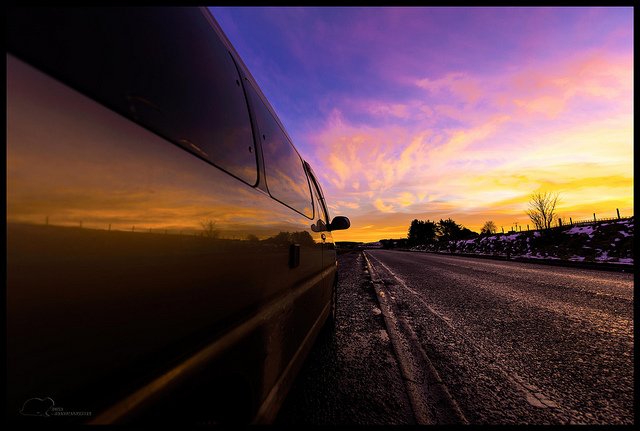
Few things are as quintessentially American as fueling up a camper van and hitting the open road. With everything you need to live comfortably on four wheels, the camper van provides self-sufficiency in a vehicle that’s manageable and fun to drive.
The Volkswagen Westfalia and its many incarnations represent, perhaps, the greatest effort toward this endeavor. There have been other versions of other makes and models, larger vans and motorhomes of course, but none conquered the design and utilitarian comfort quite like the Westy. The problem is they are heavy, and the engines are notoriously under-powered.
In Northern California, a company named GoWesty modifies the Westy to such a degree that the value of a 1980s era van, for instance, can be raised in upwards of $40,000. The changes include replacing the cabinetry and backseat, raising the chassis and increasing the wheel size and even replacing the engine.
If you don’t have the money to spend on a pricey upgrade and you want your own customized rig, you have entered the world of camper van conversions. These are homemade gems that offer a world of opportunity and creativity.
Let’s say you want a van that resembles a Japanese dojo or maybe a log cabin. You can get it done with a camper van conversion of your own. But before you get started, here are four major things to keep in mind.
The van
What type of van to choose and its condition will be the most important decision you make when building a camper van from scratch. You want a van that’s reliable, relatively fuel efficient and has the space you need for the conversion. Popular options are the Chevy Astro van or the Ford Econoline, but you can always go with any number of foreign made vans like a Mazda or Toyota. Most camper vans are converted from empty panel vans, however, and not passenger vans with windows. Some actually create windows themselves, which can be a chore. If you’re someone that likes to let the light in, go ahead and convert a passenger van. You can always sew some nifty curtains.
The bed
The bed and its level of comfort will make the difference when it comes to having a pleasant experience on your camping trips. You want enough leg room to stretch out comfortably and accommodate a guest if you are so fortunate. As for the mattress, I have seen a small mattress put crosswise in an Econoline, however it did not afford much other room aside from the bed. Otherwise a thick piece of foam should do the trick. The beauty of the Westy was how the top popped up revealing the bed space and down below the back seat folded out. You don’t have this luxury in a conversion unless you’re super handy, so most beds are built with an economy of space, raised off the floor of the van to accommodate storage underneath. For this you will have to make a platform built out of the lightest boards, likely particle board, that you can find.
Electrical
To truly travel in style and what makes having a camper van such a joy is refrigeration. This separates the camping world from the luxury world, even if you are pulling up in your homemade rig. To power a little mini-fridge first choose a model that offers the greatest efficiency. Dometic or Norcold have been trusted brands for many years. Next you need to think about power. For this you are going need to either wire to the engine battery or provide a separate battery for your auxiliary power. The nice thing about going to the engine is the battery is charged by the alternator. The Westfalias are all wired this way. But you might not want to risk draining this battery. To take things a step further, mount a 100-watt solar panel on the roof. Add a converter and you’re in business for as long as your beer runs out.
Storage
Keeping a camper van neat and tidy is one of the key components to having an enjoyable trip. With so little space it’s important to be a minimalist. Only carry what you absolutely need, but even that can blossom into multiple bins worth of stuff you’re probably not going to use. One option is to mount a roof carrier. Creating unique storage space inside the van becomes more of an art form. There is always under the bed. You can build a cabinet similar to the Westy that allows you a few drawers and some space to hide your stuff. When it comes to the style, however, that’s going to be all you. Now while you start thinking about your camper van conversion, watch the following video for inspiring ideas.
Photo credit: Flickr Creative Commons









